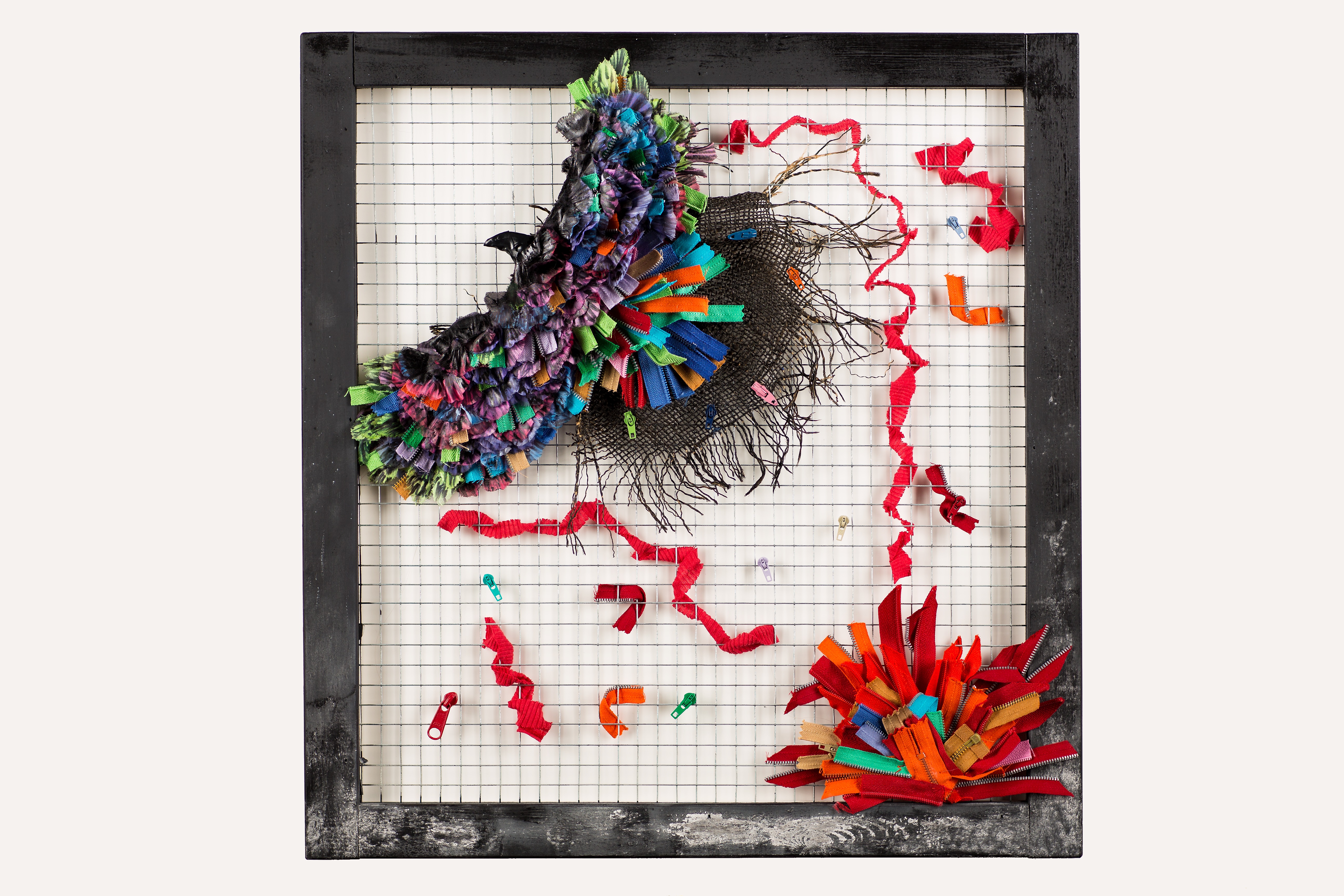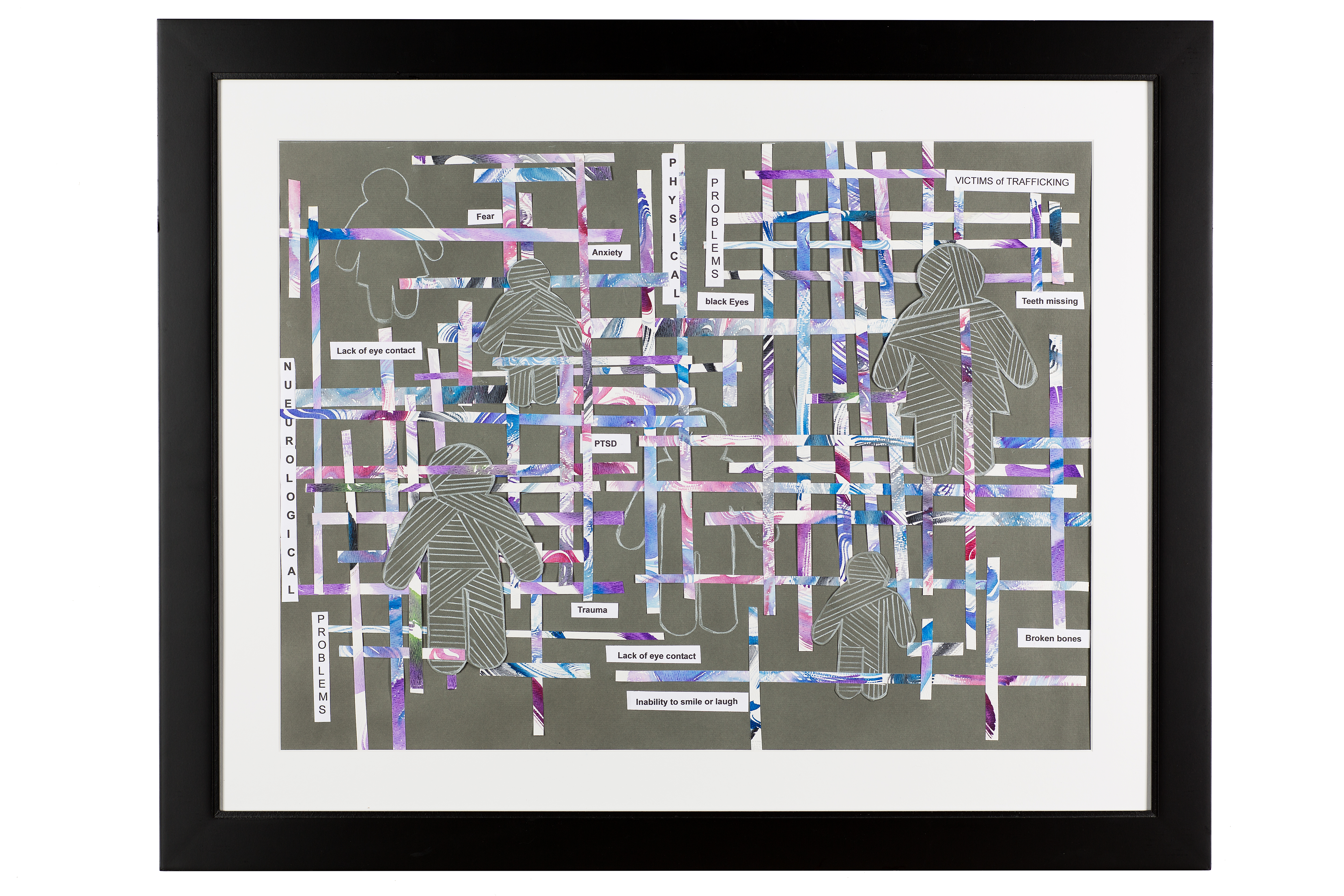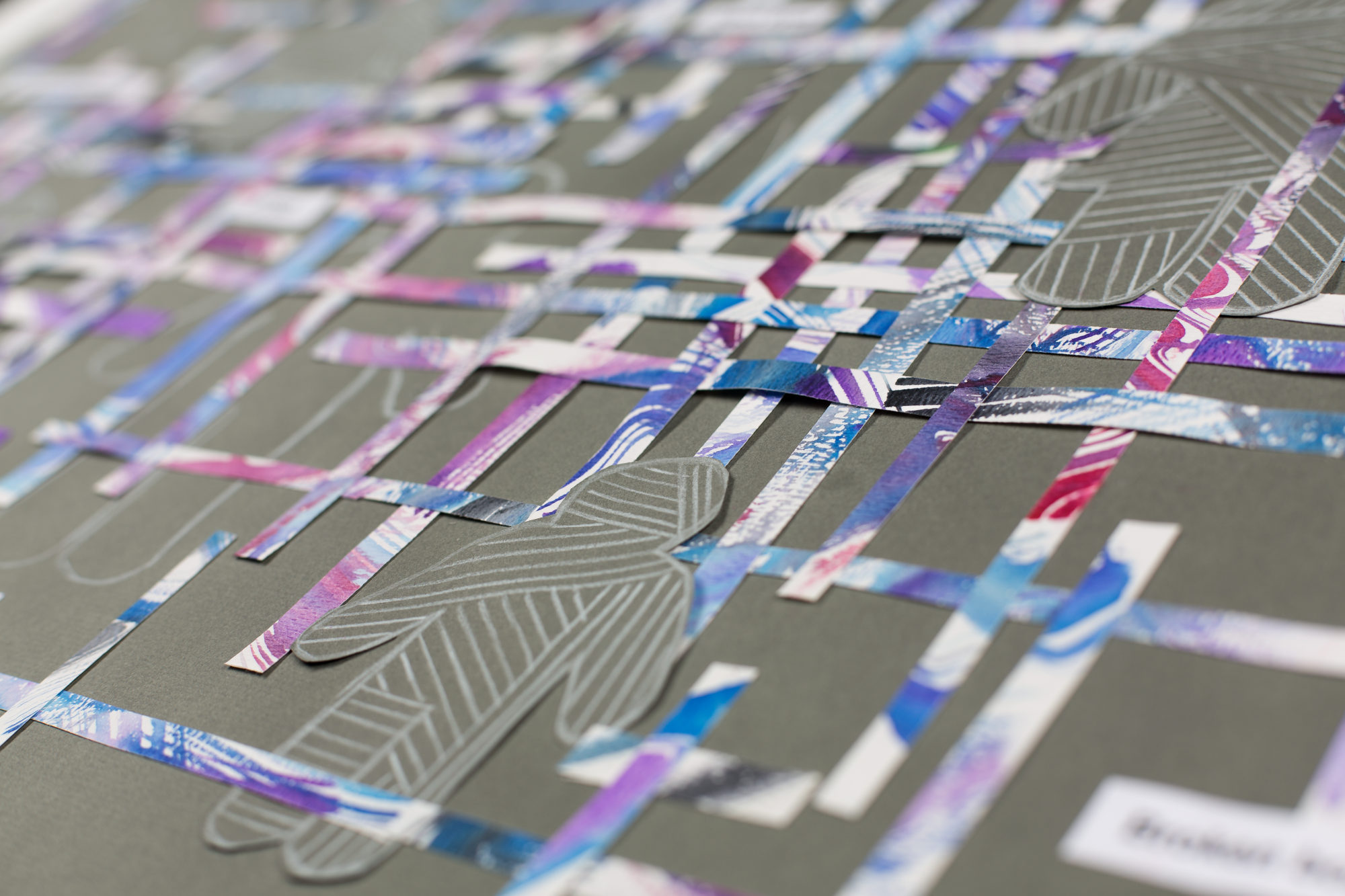This month, in tribute to National Human Trafficking Awareness Month, the Monongalia Arts Center is hosting a seriously significant group exhibition, Not On Our Watch, organized by the Hope and Liberation Coalition (HLC), examining the scope of human trafficking and the role that healthcare workers serve in the healing and prevention of human trafficking, in a “family friendly” way.

The 24 artworks including paintings, photography, art quilts, felt art/mixed media, by Ohio artists, some currently living in other states and countries. The works are created by trafficking survivors, some created by domestic abuse and rape survivors, and some is not. According to Gina, Director and Co-Founder of the HLC, the survivors remain anonymous because many have young children and/or are fearful about their past traffickers finding their location. The remaining artists are “caring individuals who wish to aid in the prevention of human trafficking. Their best offering is the creation of artwork that raises awareness in a family friendly manner, making the topic more approachable and inspiring people to action.”
Lyndsey Archer created her mixed media “Reclaimed Lives” by arranging reclaimed materials including wood, fabric and zippers. Her statement reads: “This piece was inspired by the phoenix, which obtains new life by rising from the ashes of its predecessor. Much like the restorative path to healing and thriving for human trafficking victims. The fabric symbolizes the forced labor industry. The zippers do as well and also take double meaning in being closed and then opened and ‘broken free’ as they rise from the flame.”
Elizabeth Biglin’s mixed media, “Living Mummies,” holds significance in its hues and layers, writes the artist: “…the stripes on the gray paper figures represent the injuries and trauma that survivors and current victims of trafficking experience and live with…some visible, some not. Broken bones, black eyes, neurological challenges and reproductive complications are all-too-common issues.”
She continues: “The outlined, ‘empty’ figures represent survivors and current victims of trafficking who are lost in the pain and isolation of abuse. Fear of retaliation by past or present traffickers and a complex maze of emotions inhibit survivors and current victims from speaking out and sharing openly with healthcare workers. The colors — blue and purple — indicate the severe trauma experienced by survivors and current victims of trafficking. Throughout the piece, text provides insight as to the signs of human trafficking, symptoms, and injuries that healthcare workers must learn to identify, treat, and report.”

Biglin says there is hope in organizations like the HLC in bringing awareness to the issue. “All is not lost amidst the pain and trauma caused by human trafficking,” she said about her involvement, “Together we can comfort, heal and support those who have been victimized, while working for prevention and a greater social consciousness.”
Archer agrees that a large component of the HLC is to educate the community on the issue, as well as how they can be involved in preventing trafficking: “I believe awareness and education are key to healing human trafficking. Victims are all around us and it’s up to neighbors and friends to look out for one another.”
Educating through art is complemented a panel held Friday, Jan. 13 at noon in the WVU Health Sciences Center with panelists: Theresa Flores, Human Trafficking Survivor, Founder of Save Our Adolescents from Prostitution; Margeaux Gray, Human Trafficking Survivor; Dr. Patrick Kerr, Associate Professor, Department of Behavioral Medicine & Psychiatry, WVU School of Medicine; Anne M. Lofaso, Professor, WVU College of Law; Dr. Susan Newfield, Chair of Family and Community Health, International Program Coordinator & Associate Professor, WVU School of Nursing; and Dr. Hanni Stoklosa, Department of Emergency Medicine, Brigham & Women’s Hospital, Harvard Medical School and Executive Director of HEAL Trafficking (Health, Education, Advocacy, Linkage). The panel is free and open to the public, and for those unable to attend there will be a live webcast
Perspectives will no doubt be challenged and hopefully work as impetus for change for this important issue creatively brought about in Morgantown. Friday night will be abuzz with this reception from 6-8pm which also includes a showing of showing a video created by a Michigan anti-human trafficking organization.
Down the street at Arts Monongahela Gallery, a reception sponsored by Table 9 and an art talk will be held for Overlay, an exhibit of multidisciplinary work by Robert Howsare and Crystal Ann Brown, 6-8pm. These artists call attention to the Upshur County Library, requesting donations of art supplies for their growing community programming. Another great arts night in Morgantown!
–
Based in Columbus, Ohio, The Hope and Liberation Coalition (HLC) is dedicated to creating awareness and preventing Human Trafficking via the Arts. This Coalition includes the following leading arts institutions: The Peggy R. McConnell Arts Center of Worthington (The MAC), The King Arts Complex and The City of Columbus Cultural Arts Center (CAC). Visual artists, designers, educators, Human Trafficking specialists and survivors, musicians, dancers, Spoken Word artists, poets/playwrights/writers, singers, actors, film makers, media and business consultants, (college) students, (grand) parents and yoga and self-defense instructors complete the Coalition. The HLC events and arts and education outreach programs are receiving strong support from local media and government agencies. Community in action!
If you see something, say something.
Report safely using the following: National Human Trafficking Hotline Number: 1-888-373-7888, text the helpline, text HELP to BeFree (233733) or call 911.
Hope and Liberation Coalition
Twitter @HLCoalition
Facebook

